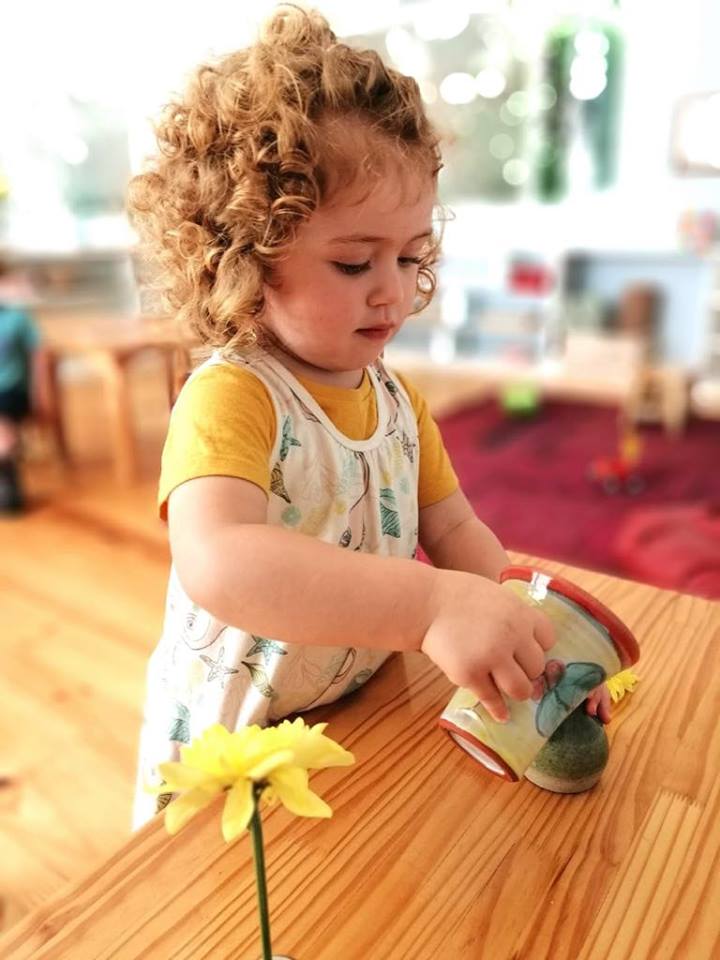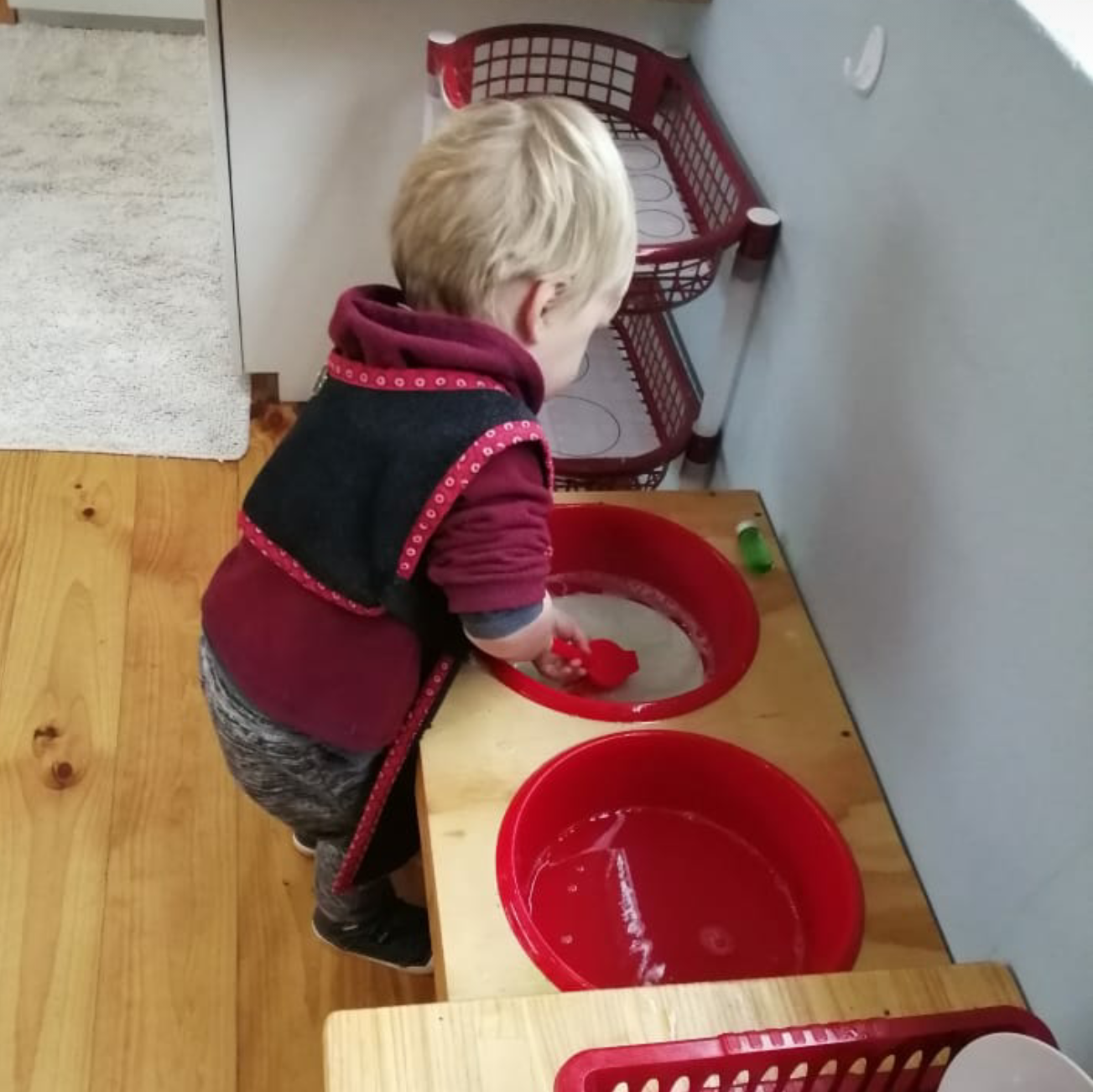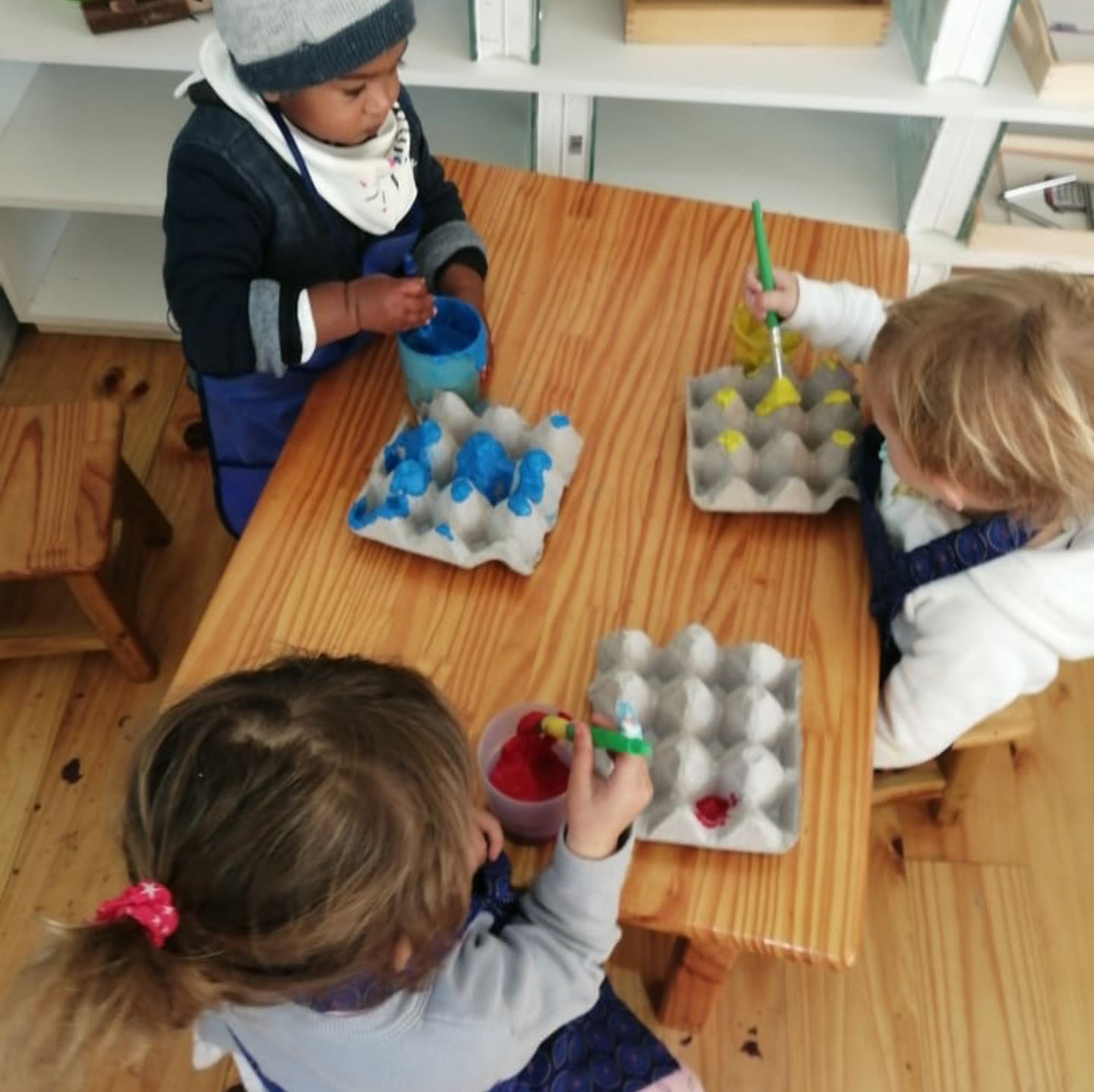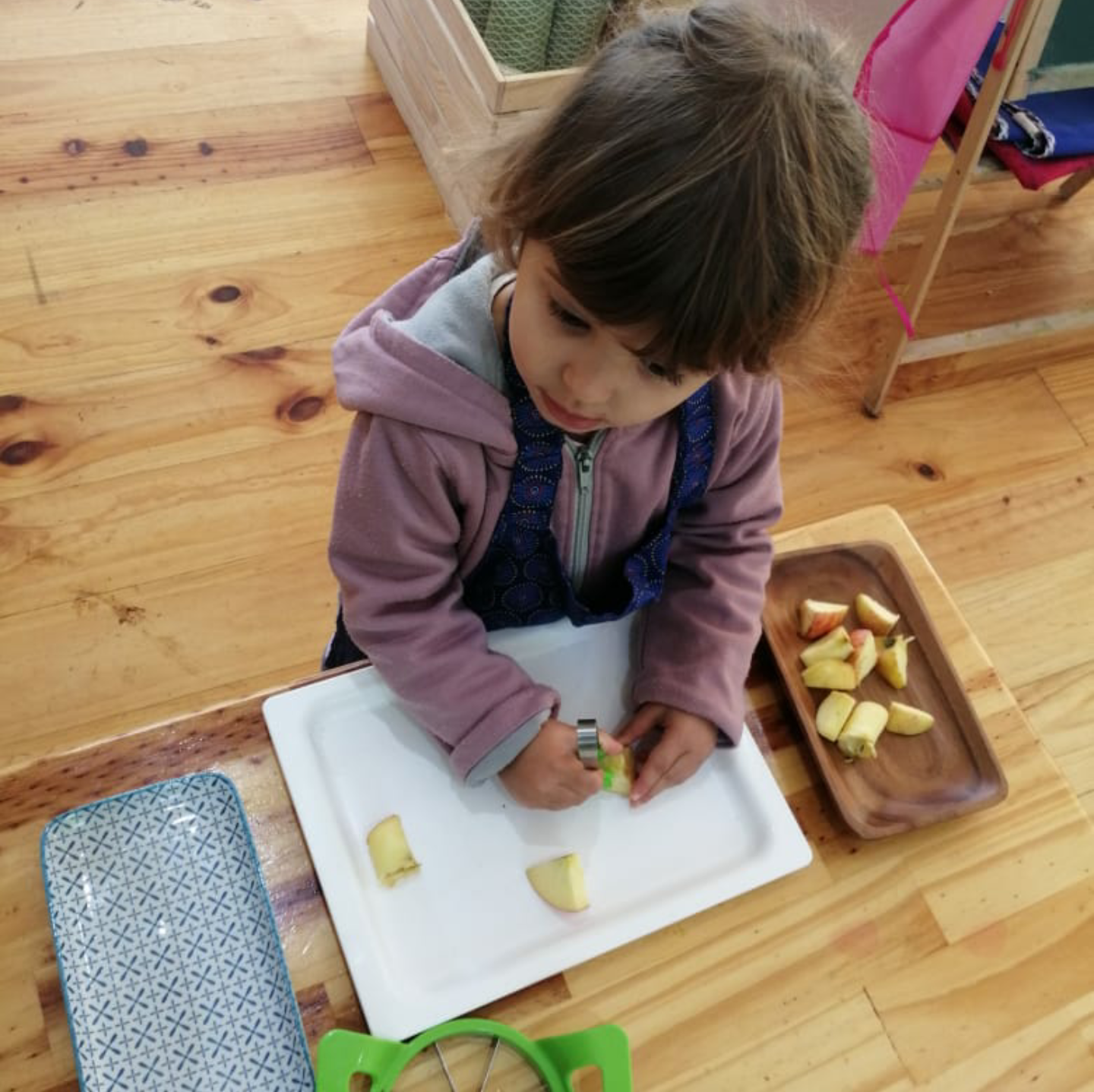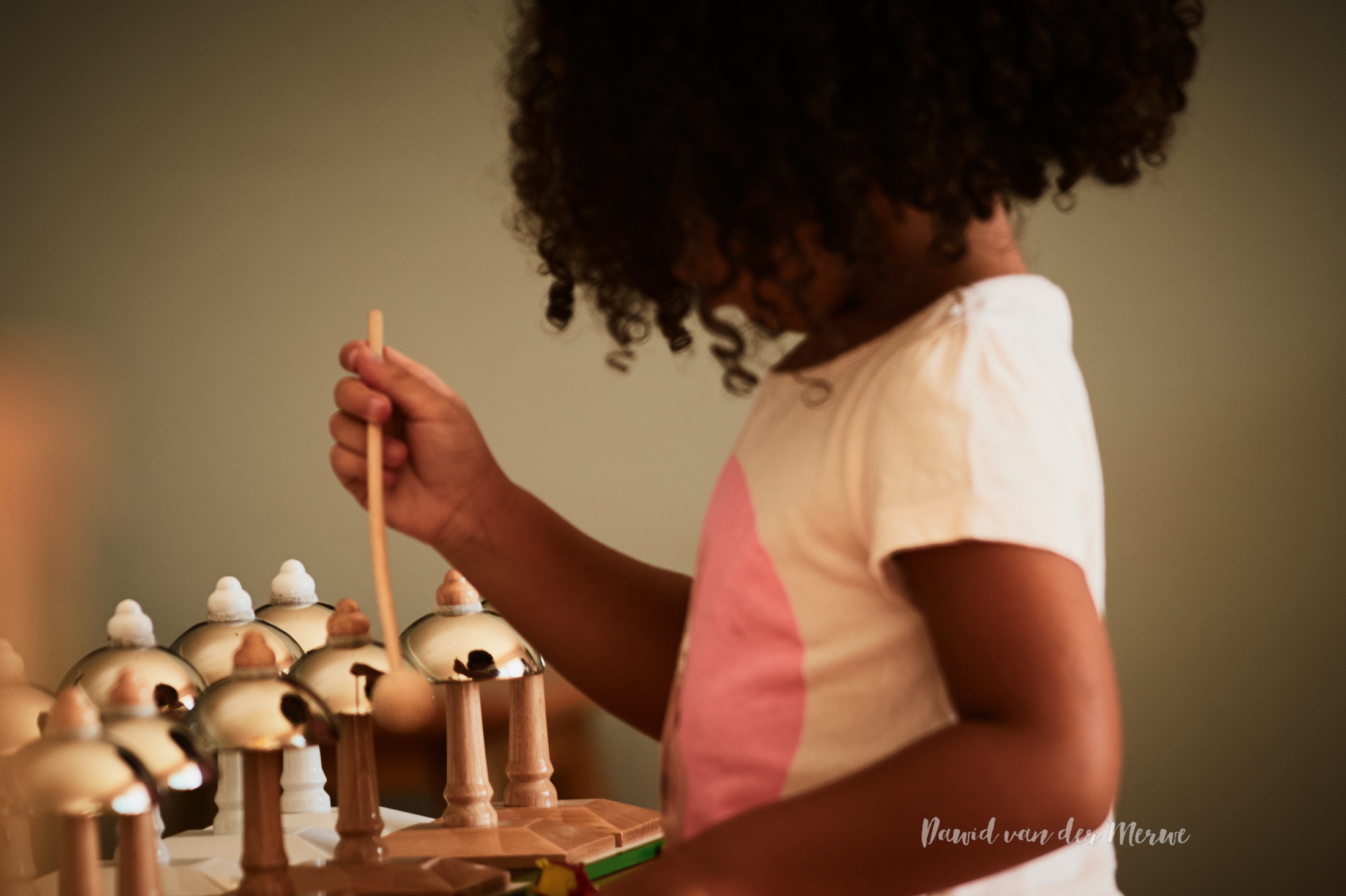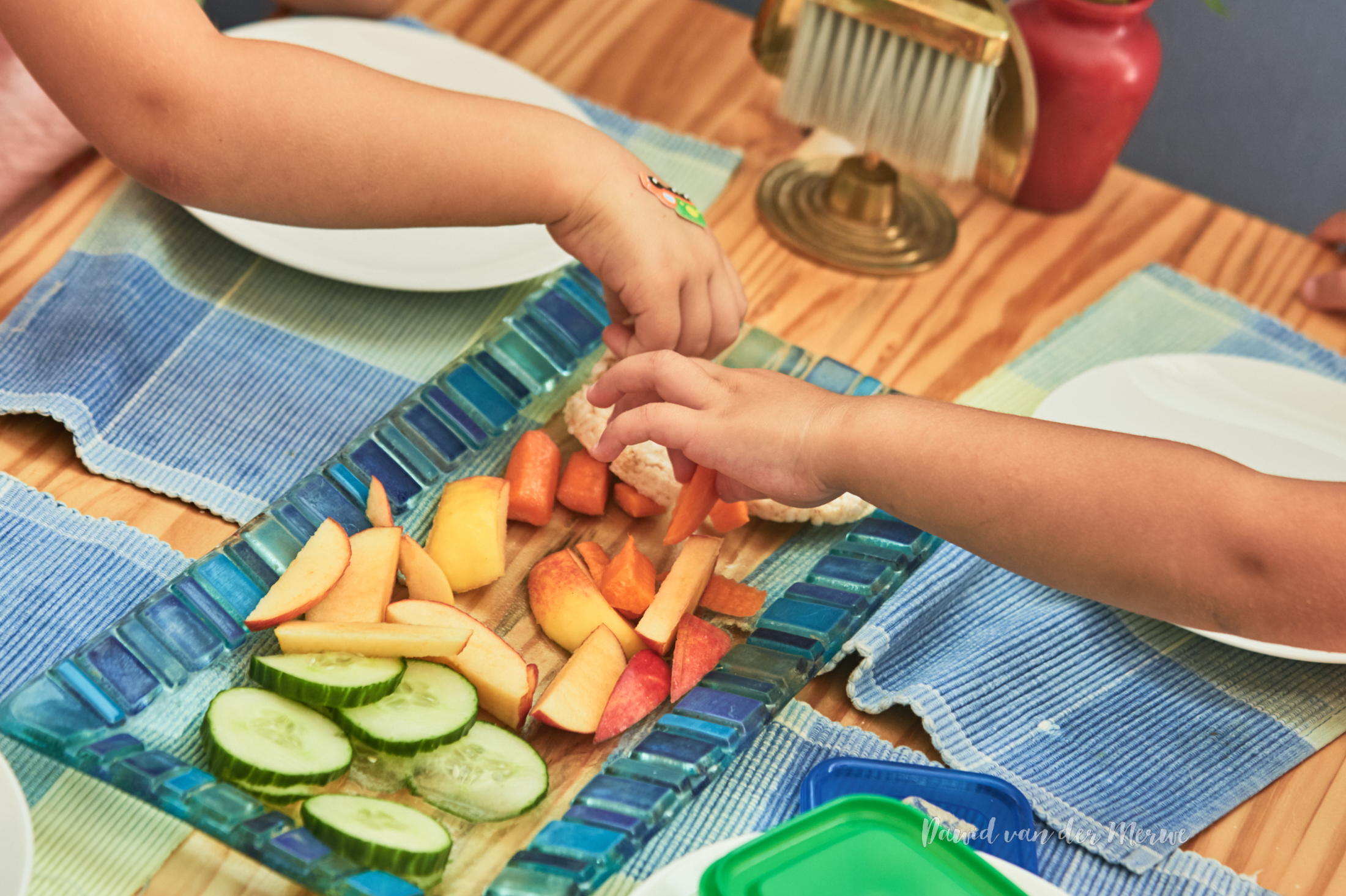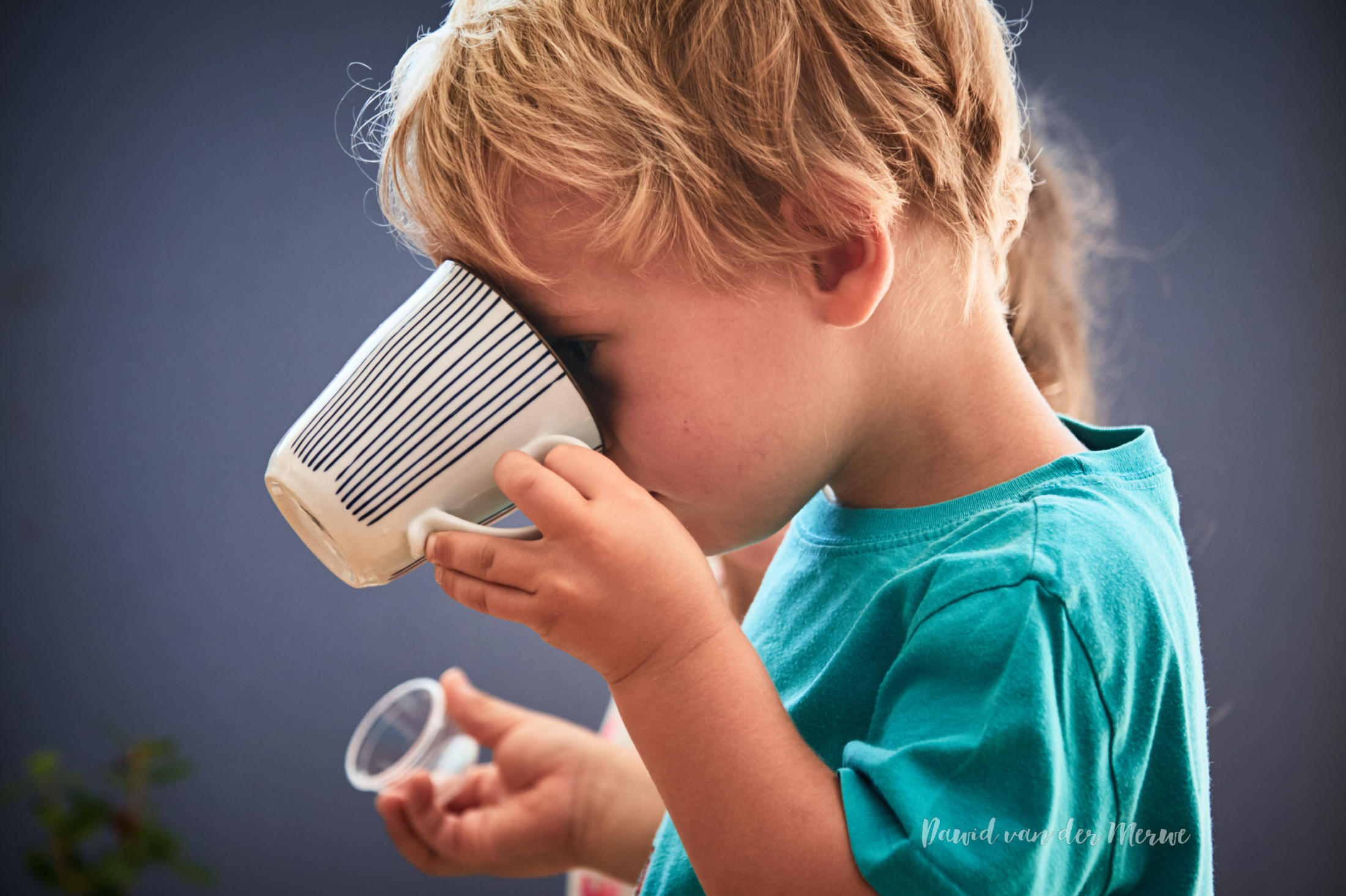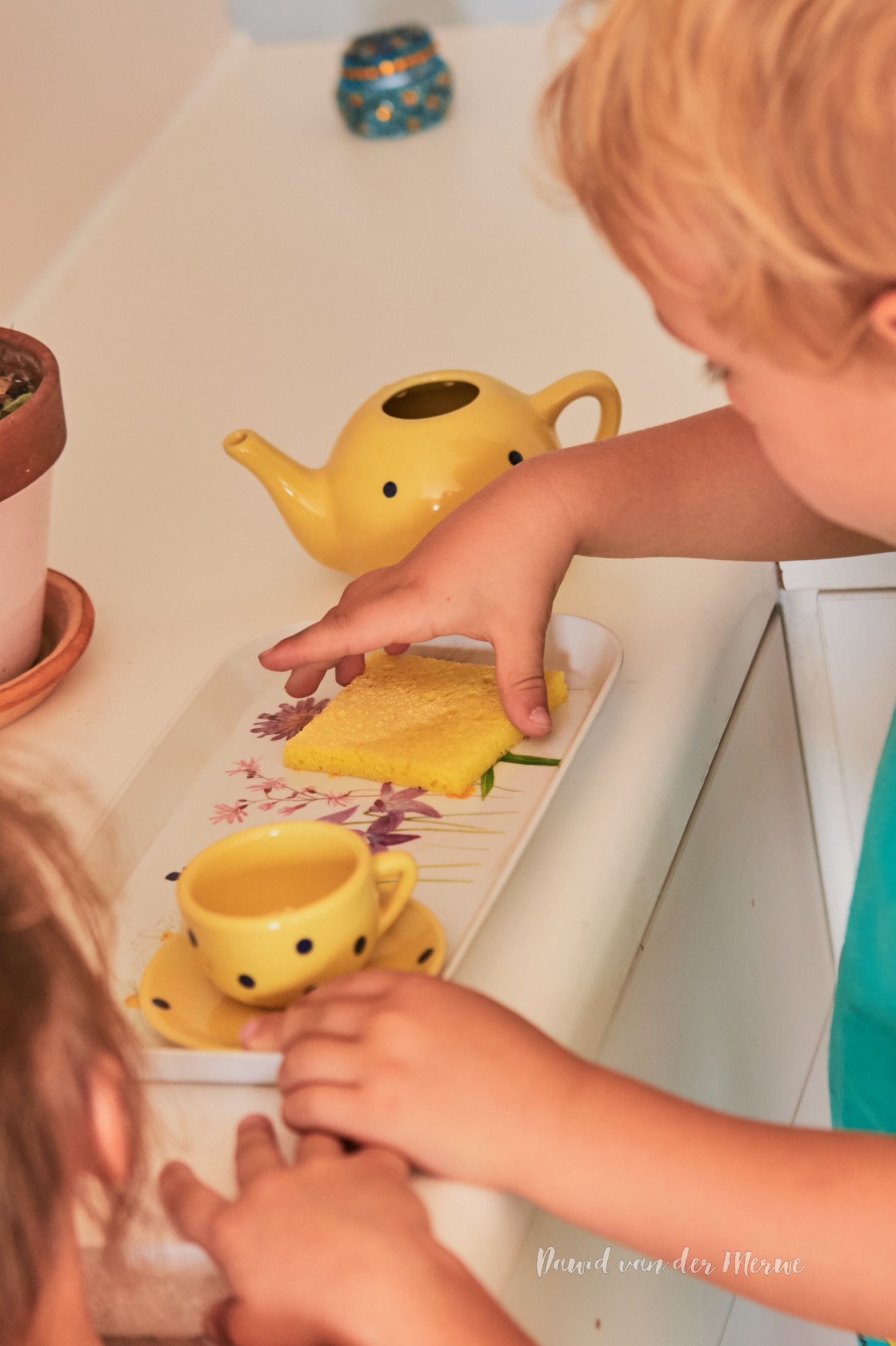A Night to Remember
A Night to Remember: Cornerstone Children’s Centre 2024 "The Sound of Children" Pantomime and Graduation
A Night to Remember: Cornerstone Children’s Centre 2024 "The Sound of Children" Pantomime and Graduation
Cornerstone Children’s Centre’s annual showcase, The Sound of Children, held at The Playhouse in Somerset West, was nothing short of spectacular. This year’s production captured the essence of the Montessori spirit—celebrating each child’s individuality, encouraging participation, fostering inclusivity, and most importantly, having fun.
The sell-out crowd, a mix of proud families, friends, and community members, was treated to an enchanting evening brimming with laughter, music, and heartfelt performances. Under the inspired direction of Theatre Director Zain, the students of Cornerstone—toddlers from Hummingbird House, preschoolers from Tortoiseberry House, and primary learners from Porcupine House—took center stage in a dazzling display of talent and creativity.
A Celebration of Talent and Joy
The program was a delightful mix of songs, movement, gymnastics, poetry, dance, ballet, and piano recitals. The performances ranged from beloved classics like Do Re Mi, The Wheels on the Bus, and Macarena to energetic crowd-pleasers such as Baby Shark and Gangnam Style.
In true Montessori fashion, every child had their moment to shine. The toddlers—many of whom were shy just weeks ago—surprised the audience with their newfound confidence, free-styling enthusiastically alongside their older peers. Their presence brought an infectious energy to the stage and warmed the hearts of everyone present.
The poetry recitals were another highlight, featuring charming renditions of The Porcupine Poem, Iguana Poem, Alligator Poem, Disappearance, and more. Each piece showcased the students’ expressive abilities, with even the youngest learners demonstrating remarkable poise and stage presence.
A Milestone Celebration
The evening also marked a significant milestone for Robin, Evander, Kuno, Luca, and Mila, who graduated from preschool. Dressed in their caps and gowns, the graduates proudly accepted their diplomas, embodying the culmination of their journey at Cornerstone. The joy and pride on their faces were mirrored in the audience’s standing ovation—a testament to their hard work and growth.
Grand Finale
The grand finale brought all the students together for an All-Star performance of “Light a Candle for Peace,” a fitting conclusion to a magical evening. “They say the neon lights are bright on Broadway... They say there's always magic in the air…”
Kudos to the Cornerstone Team
Congratulations to the staff and volunteers of Cornerstone Children’s Centre for orchestrating an unforgettable evening that truly celebrated the joy of childhood and the beauty of individuality. The event was a testament to the Children’s Centre’s dedication to nurturing well-rounded, confident, and happy learners.
We can’t wait to see what next year’s production will bring. Bravo, Cornerstone!
Cornerstone Children’s Centre is an independent pre-school for children aged 14 months to 6 years and a homeschool support centre for primary school learners aged 6 to 9 in Somerset West. We guide children through their early childhood education and foundation phase years using advanced learning equipment, the Montessori way.
Our facility is a friendly, safe, home-from-home environment with a place for everyone. We help future tech billionaires, Insta Influencers, artists, thespians, thought and community leaders, chess masters, environmentalists, Springboks, and people whose everyday ordinary magic makes our world go round take their first steps towards life, developing caring hearts, able hands, and curious minds.
Montessori vs Traditional Preschool: How to choose
Cornerstone Children’s Centre: Choosing the right preschool for your child can be overwhelming.
CHOOSING A PRESCHOOL: ONE SIZE DOESN’T FIT ALL
Adapted from a blog by Sapientia Montessori - Texas, USA.
Choosing the right preschool for your child can be overwhelming. A brief internet search will reveal such terms as “child-centered,” “faith-based,” “holistic learning” and “Montessori Approach.” How can parents possibly wade through all the academic terminology to find the educational philosophy that best suits their family? At Cornerstone Children’s Centre, we understand choosing your child’s first school is both an exciting and a daunting task. We're here to help.
THE PURPOSE OF PRESCHOOL
On your search, start by asking yourself this question: What is the purpose of preschool after all? Is it merely to provide daycare? Is it a place where children get together and play? If so, many choices are available. However, if to you, preschool is an opportunity to prepare your child for the social and academic environment that will be part of the rest of his life, then authentic Montessori school is your best choice. A Montessori school that fosters child development from a very young age and develops a passion for learning is the best type of preschool you can choose for your child.
Every parent wants their child to be happy and prosperous. Although, arguably, happiness is a relative concept, the question of how a parent evaluates their child’s happiness is an interesting one to explore. Most parents default to asking their children “are you happy?” It goes without saying that happiness for a child rests primarily on immediate reward.
Montessori aims to have a balanced and peaceful environment so the child can flourish now and for the rest of their life. In a true Montessori school, the child develops the joy of learning, knowledge and understanding. In turn, happiness results from the independence, skills and creativity the child develops, the intricate social interactions with their peers and the freedom to explore and discover everything around them.
THE DIFFERENCE BETWEEN MONTESSORI AND TRADITIONAL PRESCHOOL
The differences between Montessori and preschool curricula that do not follow the Montessori method become immediately clear when comparing the two classroom environments. In general, there are three primary differences between the two.
Traditional Preschool
On the other hand, the Montessori Method starts by stipulating that “one size doesn’t fit all”. Each child is a unique individual and each child learns differently. Thus, Montessori tailors its approach to the unique needs of each child, and to the specific needs of each child’s established developmental stage.
In an authentic, inclusive and holistic approach to Montessori school, learning is the result of both, the child’s own exploration and the teacher’s guidance. The Montessori Classroom has specialized materials which progress in complexity as the child progresses. Once a lesson is imparted, the child is given independence to explore the materials from various perspectives. It is through the handling of these materials that the child understands the core functions of each lesson, and that the abstract concepts are eventually revealed. The materials are designed for self-education, self-correction and endless creativity.
Montessori Preschool
Philosophies
Choosing a preschool that’s right for you and your family means understanding how the school will approach your child’s development. As a Montessori preschool, our educational philosophy emphasizes learning through exploration and denying the idea that "one size fits all" when it comes to education. To us, each child is a unique individual that learns differently. Thus, Montessori tailors its approach to the unique needs of each child, and to the specific needs of each child’s established developmental stage.This includes:Self-directed learning
Accommodating individual needs, interests and pace
Hands-on, material-based curriculum
A traditional preschool practices an entirely different educational approach. Typically, a teacher imparts topic-specific concepts to a group, and everyone learns the same thing at the same time. Their philosophy emphasizes:
Teacher-directed instruction
Structured curriculum
Formal learning goals and objectives
Upon the significant influence of Montessori into our communities, some traditional preschools have started to adopt some Montessori-like concepts, but without the required training, thorough understanding and complete application of the methodology, which is what ultimately yields long-term development.
Teaching Methods
In an authentic, inclusive and holistic approach to Montessori school, learning is the result of both the child’s exploration and the teacher’s guidance. The Montessori Classroom has specialized materials which progress in complexity as the child progresses. Once a lesson is imparted, the child is given independence to explore the contents from various perspectives. It is through the handling of these materials that the child understands the core functions of each lesson, and that the abstract concepts are eventually revealed. The materials are designed for self-education, self-correction and endless creativity.Using the Montessori approach, our teachers will encourage choice. This includes:Letting the child set their own learning pace
Organizing the room and groups by ability rather than age
Allowing older children to serve as role models for the younger learners to encourage cooperation and social development
Encouraging self-directed learning with manipulative toys, such as puzzles, that are self-corrective and self-regulated
Using individualized instruction with the teacher as an unobtrusive observer and facilitator
This teaching method differs significantly from that of a traditional preschool. At a traditional preschool, teaching methods involve:
The teacher as the leader or “controller” of the classroom
More value placed on social development than cognitive
Structured classes led by the teacher
Learning based on repetition, rewards and group-based instruction
Environment
When comparing the differences between Montessori and traditional preschools, ask yourself what kind of situation your child will flourish in. In a Montessori preschool, you will find the following classroom environment:Welcoming, warm and brightly lit
Numerous learning stations with hands-on materials
Children of a variety of ages working and playing together
Stress placed on organization, cooperation and respect
This differs significantly from your average traditional preschool. There, you will typically see:
Grouping based on age with group and individual instruction
Discipline enforced by teachers
Assigned seats where children are asked to sit still and listen
Pace dictated by the group rather than the individual
AVOID TRADITIONAL EDUCATION TRAPS
One of the benefits of Montessori vs. traditional preschool is that the Montessori Method is designed to sidestep all the traps that can cause students to struggle academically as they move further along the educational ladder.
One of these traps is the aforementioned “one-size-fits-all” approach to learning. A traditional classroom requires its students to conform to the average learning speed. This means students who can grasp specific concepts faster are slowed-down by having to adhere to more straightforward lessons, while those who fall behind never catch up.
Since Montessori schools create abundant opportunities for individualized learning, students have more freedom to learn at their own pace and are therefore much less likely to be bored or fall behind.
Another trap one can avoid through a Montessori education vs. a traditional education is the lack of autonomy students’ have. In Montessori schools, students are encouraged to pursue their interests, follow their creativity wherever it may take them and enlist the help of teachers and other students in order to achieve this goal. This instills in them a love of learning. Students in traditional schools, on the other hand, tend to learn to please teachers with the “right” answers.
EXPLAINING MONTESSORI VS. TRADITIONAL EDUCATION
If you find yourself in the position of explaining the difference between preschool and Montessori to others evaluating Montessori education vs. traditional education, or to fellow parents who are considering Montessori education, know that it all comes down to student-focused and stage-appropriate education. That is, a Montessori school is not primarily focused on making your child skilled at passing standardized tests or memorizing a traditional curriculum, although the education he or she receives will prepare him or her to excel in traditional forms of academic achievement.
Montessori is instead focused on nurturing your child’s natural love of learning from an early age before it is tainted by the demands and structure that stifle so many students and dampens their passion for learning.
CHOOSING THE RIGHT PRESCHOOL
At Cornerstone Children’s Centre, we grow the whole child. As you look at Montessori vs. traditional preschools, you’ll find that we are an academic institution dedicated to nurturing and inspiring creativity and discovery.
If you are a parent hoping to find the perfect fit for your child, we invite you to schedule a tour of our facilities. It’s important to observe the Montessori philosophy, teaching methods and classroom environment firsthand.
WhatsApp our admissions at 078 782 2383.
We can’t wait to welcome you!
Cornerstone Children’s Centre is an independent pre-school for children from 14 months to 6 years, and a homeschool support centre for primary school learners from age 6 to 9 years in Somerset West, guiding children through their early childhood education and foundation phase years, using advanced learning equipment, the Montessori way.
Learning The Ordinary Magic That Constitutes A Life
If you like our Children’s Centre and think that friends’ or neighbours’ children will benefit from attending here, then please share this to your social media pages or interest groups.
Education for Change
Cornerstone Children’s Centre: The only thing certain in our world at this time seems to be....constant change.
What sort of education is needed to prepare children to live in a world such as this? Read more.....
Education for a Changing World
October 25, 2024
In a world marked by constant and rapid transformation, change has become the one thing we can count on. Here in South Africa, political dynamics shift with bewildering frequency, and across the globe, we see governments wrestling with issues of identity, unity, and global responsibility. Economic uncertainties, environmental crises, and complex social challenges highlight the urgency of preparing children to navigate—and ideally, improve—this unpredictable world.
Preparing the Next Generation for a World in Flux
For most parents, providing a meaningful education is a top priority. Families across all socioeconomic backgrounds make significant sacrifices to ensure their children have opportunities for a stable, rewarding future. Education is, at the very least, a means to equip them with skills for physical, emotional, intellectual, social, and financial survival. Beyond that, it holds the promise of a life enriched by purpose, fulfillment, and the ability to contribute to a thriving global community.
People everywhere want the same essential things for future generations: a world where our planet’s resources are preserved, human potential is fully realized, and quality of life is accessible to all. We dream of our children finding joy in family, success in their careers, satisfaction in their communities, and peace in the world they inherit.
From Self-Interest to Collective Flourishing
Yet achieving this quality of life remains a challenge, primarily because people often focus on securing it for themselves and their immediate circles. Politicians tend to prioritize national interests, and individuals pursue personal gains, sometimes to the detriment of others. This self-interest, while natural, often fuels the global turmoil we see today. Ironically, at the heart of most religious and cultural teachings is a simple principle:
"Love your neighbor as yourself."
This ethos highlights the kind of education we need to foster in our children—one rooted in empathy, respect, and a sense of shared responsibility. What good is academic or career success if it’s achieved at the expense of others or our planet?
Education as a Catalyst for Positive Change
We need to raise a generation capable of creative problem-solving, resilient in the face of change, and committed to making the world a better place. Educators must inspire children to think beyond national borders, ethnic identities, and socioeconomic lines. The ultimate goal? To prepare young people not only to adapt to change but to drive positive change—sustaining the planet, upholding justice, and advancing unity.
What the world needs now are young people who aspire to heal and preserve our planet for future generations where all its creatures can flourish. This is the purpose of education in 2024: to equip our children with the knowledge, values, and skills to do just that.
About the Author
Helen Morgan, owner and principal of Cornerstone Children’s Centre in Somerset West, South Africa, holds a Bachelor of Primary Education from the University of Cape Town (1986) and a Diploma in Montessori Education (6–12 age group) from the Maria Montessori Institute in London (2009), and completed a Master’s in Montessori Education (3–6 age group) at the Montessori Institute of San Diego and Loyola University Maryland.
Cornerstone Children’s Centre is an independent pre-school for children from 14 months to 6 years, and a homeschool support centre for primary school learners from age 6 to 9 years in Somerset West, guiding children through their early childhood education and foundation phase years, using advanced learning equipment, the Montessori way.
Learning The Ordinary Magic That Constitutes A Life
If you like our Children’s Centre and think that friends’ or neighbours’ children will benefit from attending here, then please share this to your social media pages or interest groups.
How does Yuval Harari's, author of "21 Lessons for the 21st Century", view on child development sit with Montessori?
Yuval Noah Harari's views in "21 Lessons for the 21st Century" on what we should teach children have interesting parallels and differences when compared to Maria Montessori’s educational philosophy.
10 min read -
Yuval Noah Harari's views in "21 Lessons for the 21st Century" on what we should teach children have interesting parallels and differences when compared to Maria Montessori’s educational philosophy. Both share a forward-thinking, child-centered approach, but their emphases and reasoning reflect their different contexts—Harari being focused on the challenges of a technology-driven, uncertain future, and Montessori being grounded in early 20th-century educational reform with a focus on child development.
Harari's Key Views on Education:
1. Critical Thinking: Harari emphasizes teaching children how to critically evaluate information in a world overwhelmed by misinformation and data overload.
2. Adaptability: Given the rapid pace of technological change, he argues that children must learn to be adaptable and flexible, continually acquiring new skills throughout their lives.
3. Emotional Intelligence: Harari sees emotional resilience and the ability to manage stress and uncertainty as vital in an increasingly automated world.
4. Collaboration and Communication: In a globally interconnected society, the ability to communicate effectively and work with diverse groups is critical.
5. Lifelong Learning: Rather than focusing on memorization, Harari encourages a love for learning and curiosity, which he believes will be key as people face multiple career changes over their lifetimes.
6. Fluid Identity: Harari also suggests teaching children to be open to change, including the capacity to adapt their identity and beliefs in a world that is constantly evolving.
Maria Montessori's Educational Philosophy:
Maria Montessori’s approach, developed in the early 1900s, focuses on the natural development of the child, respecting their autonomy, and creating an environment that allows them to learn at their own pace. Her key tenets include:
1. Self-Directed Learning: Montessori emphasized child-led learning, where children explore their interests and learn through doing. The role of the teacher is more of a guide than an instructor.
2. Hands-On Learning: Montessori believed that children learn best through physical interaction with their environment. Her classrooms are designed to foster curiosity and independence through tactile materials.
3. Respect for the Child: Central to her philosophy is the respect for the child’s individual learning process. Children are given the freedom to make choices within a structured environment, fostering self-discipline and responsibility.
4. Focus on Developmental Stages: Montessori’s approach is rooted in understanding the developmental stages of children and tailoring education to fit their psychological and intellectual growth at each stage.
5. Collaboration and Social Development: While individual learning is central, Montessori also emphasized cooperative learning. Mixed-age classrooms encourage children to learn from one another, fostering social skills and empathy.
6. Global Citizenship: Montessori education aims to foster an awareness of interconnectedness and global responsibility, emphasizing peace, empathy, and respect for diversity.
Comparison:
1. Critical Thinking and Autonomy: Both Harari and Montessori emphasize the importance of autonomy and self-directed learning. While Harari stresses critical thinking in the face of modern information challenges, Montessori’s approach is about fostering a child’s natural curiosity and ability to think for themselves from a young age. Harari’s focus is more on critical discernment of external information, while Montessori’s is on internal cognitive development.
2. Adaptability vs. Natural Development: Harari stresses the need for adaptability in a fast-changing world, where future jobs and societal norms may be completely different. Montessori also values flexibility, but her focus is on creating an environment where children can develop naturally at their own pace. Montessori education is about nurturing the child’s innate capacities, while Harari’s is about preparing children for an unpredictable future.
3. Emotional Intelligence: Both place great importance on emotional development. Harari highlights the need for emotional resilience to cope with stress and change, while Montessori focuses on the holistic development of the child, including emotional and social skills. Montessori’s emphasis on empathy, social harmony, and peace aligns with Harari’s view of collaboration and emotional intelligence as essential future skills.
4. Collaboration and Global Awareness: Harari stresses the importance of collaboration in an interconnected world, something Montessori was already advocating for over a century ago. Montessori’s mixed-age classrooms and focus on global citizenship echo Harari’s belief in the need for children to learn how to cooperate and navigate a multicultural, interconnected world.
5. Lifelong Learning: Harari advocates for fostering curiosity and a love of learning that will drive continual personal and professional growth. Montessori also believed that education should instill a love of learning, starting from a young age, through exploration and discovery, which can set the foundation for lifelong learning.
6. Fluid Identity vs. Stability: While Montessori’s method tends to emphasize a stable development of the child’s character and independence, Harari introduces the more modern idea of a “fluid identity,” suggesting that in the future, children must be prepared to continually rethink their beliefs and roles. Montessori’s approach is more rooted in nurturing a consistent personal identity.
Conclusion:
Both Harari and Montessori advocate for fostering independence, curiosity, and emotional development in children, but Harari’s view is more focused on preparing children for the unpredictable, technological, and rapidly changing world of the future. Montessori, on the other hand, is focused on creating a nurturing, child-centered environment that respects the natural development of the child. Both views complement each other, with Montessori’s child-centered principles providing a foundation, and Harari’s ideas pushing for adaptability in a future defined by constant change.
Cornerstone Children’s Centre is an independent pre-school for children from 14 months to 6 years, and a homeschool support centre for primary school learners from age 6 to 9 years in Somerset West, guiding children through their early childhood education and foundation phase years, using advanced learning equipment, the Montessori way.
Cornerstone 2021 - Preschool Education in a Post Covid-19 World
Learn more about Montessori education.
Help Me to Help Myself: Independence and the Montessori Philosophy
Isn’t that what each of us wants? For our children to become adults who can make good decisions, who feel confident and know themselves? Then why do we so often parent in a way that achieves mostly dependence? Read more about the Montessori way to independence here.
“Help Me to Help Myself”: Independence and the Montessori Philosophy
Source: Jennifer Shields - The Montessori Guide
Maria Montessori had an innovative perspective regarding education. She did not look at a set of skills or a body of knowledge. Instead she focused on the development of the whole person over the course of gaining maturity:
“Montessori saw education as a means whereby children might develop their personalities so as to eventually achieve a mature and independent adulthood.”
(Mario Montessori, Education for Human Development)
Isn’t that what each of us wants? For our child to become an adult who can make good decisions, who feels confident and knows her or himself? Who can both accept their reality and work to make the world a better place? The fundamental foundation for this independence is laid at the beginning of a child’s life.
An aid to life
Maria Montessori noted that while animals are driven by instincts, bound by them to certain behaviors, human beings must create a self or personality as they mature. Through observation, she identified “guiding instincts” that incite the human to develop.
“Maria Montessori noted that while animals are driven by instincts, bound by them to certain behaviors, human beings must create a self or personality as they mature. Through observation, she identified “guiding instincts” that incite the human to develop.”
To help the child reach her/his full potential, we try to understand these inner drives and offer the best guidance and environment in which that foundation of the personality can be formed. Only the child can achieve self-construction. Adults have the responsibility to assist them. We study to understand the stages of growth and we prepare ourselves and the environment to foster their best development.
Then we let go—it is the child who strives to be independent to grow and to learn. It is their process. While we may believe we are “helping” the child, in fact, any time the adult offers assistance or interrupts, they become an impediment to the child’s growth.
Montessori observed children and found they had drastically different characteristics at different ages. From birth to age three, the child takes in her/his world while unconscious of the process. She/he is a sensorial learner; unable to use logic or reasoning to process these experiences. Their absorbent minds allow them to adapt to their environment. The Inuit child becomes an Inuit; the Taiwanese child a Taiwanese. The environment becomes them, in a sense. To help them develop to their greatest potential, we must allow these children access to their world. We can only indirectly influence this very young child. From ages three to six years, they are still absorbent and still forming that foundation of their personality, but becomes more conscious about choices. The adult can more directly affect this child and directly influence her development.
Initially, the infant bonds with her mother, then with her family. This healthy emotional attachment will allow her/him to reach out into the world successfully.
“While we may believe we are “helping” the child, in fact, any time adults offer assistance or interrupts, they become an impediment to the child’s growth.”
Movement is a major acquisition during this phase. She/he needs freedom to move and a view of the environment. From lifting the head and neck to the sweet baby “push ups” to rolling over, grasping at objects, and eventually creeping and crawling—this progression of coordinated movements involves myelination of the baby’s nervous system. These patterns of nerve firing are strengthened. From baby’s perspective, she/he is urged from within to move and coordinate movement. By fostering an environment that allows a baby to move freely, with a movement mat, a floor bed instead of a crib, with comfortable clothing, and by avoiding having her/him in containers (including prolonged periods of time in a car-seat, bike trailer, swing, etc.), she/he can maximize her development.
Soon the child will be pulling up, then cruising and walking. Now her/his hands are free and she/he can more freely manipulate objects. Montessori called the hand the tool of the intellect. Through coordinating the hands, the child can master her environment, so we are very aware of giving material that will help her/him progress in her/his grasp, hand strength and fine motor control. To the child under six, we must offer the best of reality: to the youngest the best, Montessori said. The materials: child-sized tools such as a small broom, a lovely china pitcher for practicing pouring, a wagon, balls, a little watering can, etc. By giving her/him a chance to care for and interact with the environment, she/he may coordinate the desires of her/his mind with the movements of her/his body. This draws her/him into concentration, leading to self-discipline. She/he can experience activities that allow her/him to master the movements and steps in caring for her/his body also: combing her/his hair, washing hands at a special stand, fastening snaps on a frame.
All of these activities allow the child to experience her/his own abilities: she/he can practice in an unhurried setting. She/he has been shown the movements in a clear and consistent way, free of interference or chatter. The materials are lovely, real, sized just for her/him, and color-coded so she knows they make up a set. All of these practical life materials help the child attain functional independence.
Language is the other major conquest of the young child. If movement allows the child independence in harnessing the body to do her/his bidding, language allows for successful social interaction. She/he can absorb whatever language is in her environment without effort, just by living. How she/he acquires her/his mother tongue is affected by the quality of interactions and language. If we offer positive, stimulating communication, she/he experiences language as alive, useful, and exciting. It really is a simple system—what goes in comes out. Offer rich vocabulary. Instead of, “Give me that thingie,” we can ask, “Andrew, would you hand me the rolling pin?” Specific terminology helps them order and classify their world and to eventually use those terms to express their thoughts, feelings, and needs. We also listen attentively to each child. We do not correct her/him directly, as it will discourage her/his attempts at communication. Electronic language stimulation does not help her/him with this acquisition—in fact it interferes with her/his language capacities. Even “educational” television or computer games are a negative influence on her/his language and movement.
Order helps the young child conquer her world. She/he knows what to expect if objects are in the same place: from the rocking chair where she/he is nursed to the place where her/his toys and clothing are stored. We limit the objects in the environment. Less is more. We can rotate toys on her/his shelf so that only a few items may be mastered and no huge mess can be generated. The order of objects in her/his world and order of our responses to her/him will become part of who she is. External order creates internal order and this is a significant foundation to the intellect.
The Montessori teacher considers her role to be a guide or directress, acknowledging that it is the child’s work to develop. We prepare the environment so the child can master movements and become functionally independent—she/he can meet her own needs. She/he has a way to use the toilet so she/he needs as little help as possible. The adult examines the environment to remove any obstacles to the child’s independence: is the sink too high? Can we find a smaller dustpan and brush to fit the child’s hand? Is there a place to put cloths after wiping up a spill? We observe and wait to see if the child can solve a problem or if other children might step in to help. The large class size and mixed ages help insure that this spontaneous help will arise, allowing children to experience leadership and to follow good peer role models.
The young child delights in opportunities to master movements and experience independence. She/he works alongside others. It is not in her/his nature to share yet or even take turns. If she/he chooses work, it is hers/his and she/he uses it as long as she/he wishes. As she/he nears age four and a half, she/he may begin to collaborate in a small group successfully. However, natural social interactions take place among the mixed ages of children. This unfolds in the class as the children are ready.
The teachers consistently model positive social behavior. The Montessori guide respects the child as she/he studies the psyche of the child, prepares the environment, and observes the child’s behavior. She offers lessons based on the individual child’s needs, one on one, so that the child can have a customized lesson, tailored to her/his interest and ability.
Each lesson isolates a difficulty—e.g., how to use scissors. We show “open, close,” demonstrating rather than explaining. We separate the use of the scissors from the flower arranging that involves using the scissors. In this way, the child is only mastering one new skill at a time. She/he becomes independent because she/he can wholly focus on each small skill, not overwhelmed.
The lesson is called a “presentation” because it is a kind of gift. It is up to the child to choose that work again, to decide when and where to repeat and practice that activity. If the adult has observed well and prepared the environment successfully, the child will be eager to repeat. Through repetition and through free choice, the child builds up her/his skills her-himself and experiences success. She/he can cut with scissors, wipe up a spill, button a sweater, polish wood, serve her/him-self a snack. She/he gets to know her/his likes and dislikes. The materials give her feedback—is there still water on the table? Is there a button not showing on the frame? She/he does not need to ask an adult to evaluate her/his work. This control of error empowers the child to seek her/his own level of mastery. These experiences contribute to psychological independence, an important goal we have for the child. It is a pivotal time of forming her/his personality; she/he is able to assess her/him-self, make choices, and experience consequences. All this occurs within a setting of freedom of choice (she/he can choose from among the lessons she/he has received) and clear limits that keep everyone safe.
The adult sets the limits, prepares the environment, and links the child to the materials with customized lessons. The adult must also protect the essential freedoms of the class and respect the child in all ways. We even go so far as to be mindful about the undermining effects of praise. The child ought to experience success on her own terms. We do not interrupt her/his work with “good job,” nor do we want her/him to depend on us for her self-esteem.
“By the time the child is ready to move up to the elementary classroom, her teeth may be falling out and her body becoming lanky and tall, but more importantly her psychological characteristics are changing.”
By the time the child is ready to move up to the elementary classroom, her/his teeth may be falling out and her/his body becoming lanky and tall, but more importantly her/his psychological characteristics are changing. Her/his mind is now a reasoning one. She/he wants to take on larger questions of “why” and has a desire to know about the bigger picture. Montessori says the child between ages 6 and 12 years has a “herd instinct,” a strong need to work with peers. A parent may feel left out by this child who is very stable, very driven to be with his friends. We must accept that he is happy with peers and will thrive amongst them. It is not a slight to the family, but a sign that the child is healthy and reaching out into the world when she/he wants to be with his friends.
This older child has the skills and abilities she/he mastered before age six, but we have to realize that she/he no longer is as focused on order. She/he may know how to make a bed and while she/he used to enjoy this task, now he does not. At this age, we have to appeal to the child’s reasoning mind: we delineate chores or responsibilities and give him chances to experience consequences if she/he shirks her/his duties. One elementary teacher reported that she allowed a few plants in the classroom to die if a child, after being reminded, did not follow through on his chore.
In a Montessori school, the elementary aged child is ready for lots of group work, and she/he thrives on organizing the roles and responsibilities within it. Who will record the research? Who will illustrate the timeline? What about the presentation to the larger group? Do you remember setting up little clubs with your friends when you were this age? Hours might be spent organizing the rules and structure of the group. We work with the nature of this child, building in opportunities for group work rather than discouraging chatting and socializing. As in the primary class, we have to allow the child to have choice in what she/he researches: e.g., what kind of transportation would you like to investigate? I recall one very detailed timeline that a pair created on the history of the toilet. The element of choice ensures the child is self-motivated.
“We work with the nature of this child, building in opportunities for group work rather than discouraging chatting and socializing.”
The concept of justice is an important one to this child. We have to allow her/him to explore what is right and wrong and be sensitive to her/his challenges of, “But it’s not fair!” or tattling-type behavior. The elementary age child is trying to work out the rules of society, and she/he may have many questions and need to discuss what she/he notices. This summer, on a long stretch of road in very flat Kansas, my daughter was very concerned if I drove even two miles above the speed limit on the highway. “But, Mom, you’re speeding! Look at the sign.” This exploration of ethics will help the child come to an independent concept of right and wrong for her/him-self.
We are continually walking the careful line with our children as parents and as Montessori guides: to understand the child’s phase of growth, her/his abilities, interests, and challenges. If we can support her/him and know when to help and when to more importantly step back, to create the richest and most appropriate environments made up of materials, routines, and people that will stimulate and enrich the child at that time, she/he will be able to come to know her/him-self. She/he masters first functional, then psychological, and eventually intellectual independence as she/he matures. I asked my 15-year-old son what independence meant to him and he said, “Become your own person.” I think that is what we all want for our children.
© AMI/USA 2014
Learning The Ordinary Magic That Constitutes A Life
If you like our Children’s Centre and think that friends’ or neighbours’ children will benefit from attending here, then please share this to your social media pages or interest groups.
Montessori Preschool Education: A Child Centred Approach
Read more about child centred education…..
What is Montessori Education?
Source: Montessori North West - Educating Adults On The Nature Of Childhood
The Montessori Method of Education, developed by Maria Montessori, is a child-centered educational approach based on scientific observations of children. Montessori's method has been used for over 100 years in many parts of the world.
The Montessori method views the child as the one who is naturally eager for knowledge and capable of initiating learning in a supportive, thoughtfully prepared learning environment. It attempts to develop children physically, socially, emotionally and cognitively.
Montessori environments support the learning of children from birth to middle school:
INFANT/TODDLER
for children aged birth to three years
provide a safe, engaging and nurturing environment for the child
promote trust in themselves and their world
develop confidence in their emerging abilities
develop gross motor coordination, fine motor skills, and language skills
offer opportunities to gain independence in daily tasks
PRIMARY (ALSO CALLED THE CHILDREN’S HOUSE)
for children aged three to six years
foster the growth of functional independence, task persistence and self-regulation
promote social development through respectful, clear communication and safe, natural consequences
contain a large variety of materials for the refinement of sensory perception and the development of literacy and mathematical understanding
offer opportunities for imaginative exploration leading to confident, creative self-expression
ELEMENTARY
for children aged six to twelve years (Lower Elementary, ages six to nine; Upper Elementary, ages nine to twelve)
offer opportunities for collaborative intellectual exploration in which the child’s interests are supported and guided
support the development of self-confidence, imagination, intellectual independence and self-efficacy
foster an understanding of the child’s role in their community, in their culture and in the natural world
ADOLESCENCE (ALSO CALLED FARM SCHOOLS)
for adolescents aged twelve to fifteen years
ideally a working farm in which adolescents engage in all aspects of farm administration and economic interdependence, but also include non-farm environments in urban settings
assist the young adult in the understanding of oneself in wider and wider frames of reference
provide a context for practical application of academics
emphasize the development of self-expression, true self-reliance, and agility in interpersonal relationships.
Dr. Montessori died before the educational approach to this level was completed. However, many Montessori adolescent learning environments exist, with Montessori professionals working towards standards for this level.
Above all, Montessori classrooms at all levels nurture each child’s individual strengths and interests. Montessori education encourages children to explore their world, and to understand and respect the life forms, systems and forces of which it consists.
The Journey to Independence Starts Here
At Cornerstone Children’s Centre for early learners we follow the child's natural development in order to advance learning. Children thrive when they are placed in an environment where they feel secure, are able to move freely and engage in a wide choice of activities specifically suited to their age.
Learning The Ordinary Magic That Constitutes A Life
If you like our Children’s Centre and think that friends’ or neighbours’ children will benefit from attending here, then please share this to your social media pages or interest groups.











































































































